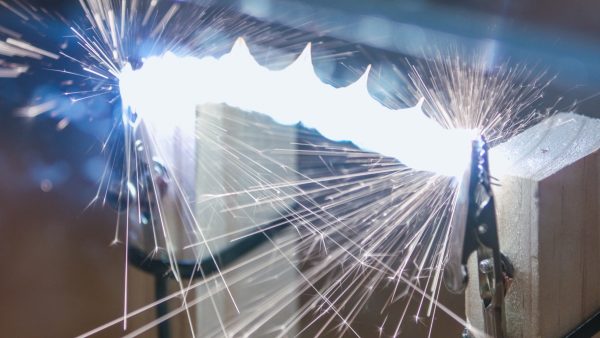Conductor Definition
A conductor allows electricity to flow easily. For example, copper is a conductor used in circuits.
View Lesson on Electricity & Circuits
Become a member to get full access to our entire library of learning videos, reading material, quiz games, simple DIY activities & more.
Become a member to get full access to our entire library of learning videos, quiz games, & more.
Plans & Pricingto watch this full video.

Access All Videos
and Lessons, No Limits.
Access All Videos

No credit card required,
takes 7 sec to signup.
No card required

Ready-to-go lessons
that save you time.
Ready-to-go lessons
If you are on a school computer or network, ask your tech person to whitelist these URLs:
*.wistia.com, fast.wistia.com, fast.wistia.net, embedwistia-a.akamaihd.net
Sometimes a simple refresh solves this issue. If you need further help, contact us.
Electricity & Circuits
Fun Facts
- Metals like copper and aluminum are examples of conductors.
- Any material can conduct electricity. The difference between conductors and insulators is the degree to which they allow the electric current to flow.
- Different combinations of conductors and insulators can be used to control the flow of electricity.
Why Do We Need To Know About Conductor
Learning about conductors helps us understand how we use electricity in our lives. Conductors are materials, like the metal in wires, that let electricity flow through them. This is why we can use things like blenders and electric cars. Conductors and insulators are also important for making sure electrical systems are safe and work well.
Conductors are not just in wires; they are also used in medical devices like prosthetics and in distributing power across places. This shows us how important they are in our daily lives and in keeping society running smoothly. Electrical engineers use conductors to create all kinds of electrical systems, from the gadgets we use every day to big projects like power plants. This opens up many job opportunities and shows how important it is to know about conductors.
Frequently Asked Questions
Check out the Full Lesson on Electricity & Circuits
In this lesson, we learn that:
- Electricity is the flow of electrical energy from one place to another.
- Electricity flows through conductors, but it cannot flow through insulators.
- A closed circuit is needed for electricity to flow and power our electronics.
Related Topics
- Absorbency Definition
- Adaptation Definition
- Algae Definition
- Amplitude Definition
- Analog Signal Definition
- Batteries Definition
- Bioindicator Definition
- Biotechnology Definition
- Circuit Definition
- Circulatory System Definition
- Coastal Erosion Definition
- Competition Definition
- Condensation Definition
- Conductor Definition
- Convection Definition
- Definition Of Force
- Definition Of Living Things
- Electricity Definition
- Engineering Design Process Definition
- Food Chain Definition
- Gas Definition
- Geologic Time Scale Definition
- Geosphere Definition
- Glacier Definition
- Gravity Definition
- Heat Definition
- Insulator Definition
- Larvae Definition
- Liquid Nitrogen Definition
- Magma Definition
- Multicellular Definition
- Particle Model Of Matter Definition
- Plant Definition
- Problem Definition
- Proton Definition
- Pull Definition
- River Definition
- Salt Water Definition
- Scientific Name Definition
- Solar Eclipse Definition
- Solar System Definition
- Tides Definition
- Trait Definition
- Transverse Wave Definition
- Volcano Definition
- Volts Definition
- Weather Map Definition
- Weight Definition
Start a Free Trial Today. Get a $5 Amazon Gift Card!
Teachers! Start a free trial & we'll send your gift card within 1 day. Only cards left. Try it now.
Select Grade
Select Subject
This email is associated with a Science Kit subscription. Kit subscriptions are managed on this separate page: Manage Subscription

-
Download InvoiceScience & Math$/yr
-
Download InvoiceScience Only$/yr

access all lessons
• No credit card required •
"My students loved the videos. I started the video subscription in May and used them as a review before the state test, which I know contributed to 100% of my class passing the state test."
Rhonda Fox 4th Grade Teacher, Ocala, Florida
Use Generation Genius in Your School
Access all lessons free for 30 days.
"My students loved the videos. I started the video subscription in May and used them as a review before the state test, which I know contributed to 100% of my class passing the state test."
Rhonda Fox 4th Grade Teacher, Ocala, Florida
• No credit card required •
Already a member? Sign In
* no credit card required *

* no credit card required *
* no credit card required *


to Discover the Benefits of Generation Genius
Learn How to Save for Your School & District!

no credit card required
Skip, I will use a 3 day free trial
Enjoy your free 30 days trial
-
Unlimited access to our full library
of videos & lessons for grades K-5. -
You won’t be billed unless you keep your
account open past your 14-day free trial. -
You can cancel anytime in 1 click on the
manage account page or by emailing us.
-
Unlimited access to our full library of videos & lessons for grades K-5.
-
You won't be billed unless you keep your account open past 14 days.
-
You can cancel anytime in 1-click on the manage account page.
Cancel anytime in 1-click on the manage account page before the trial ends and you won't be charged.
Otherwise you will pay just $10 CAD/month for the service as long as your account is open.
Cancel anytime on the manage account page in 1-click and you won't be charged.
Otherwise you will pay $10 CAD/month for the service as long as your account is open.
We just sent you a confirmation email. Enjoy!
DoneWe use cookies to make your experience with this site better. By using this site you agree to our use of cookies. Click "Decline" to delete and block any non-essential cookies for this site on this specific property, device, and browser. Please read our privacy policy for more information on the cookies we use.Learn More
We use cookies to improve your experience. By using this site, you agree to our use of cookies. Click "Decline" to block non-essential cookies. See our privacy policy for details.Learn More




























































































































